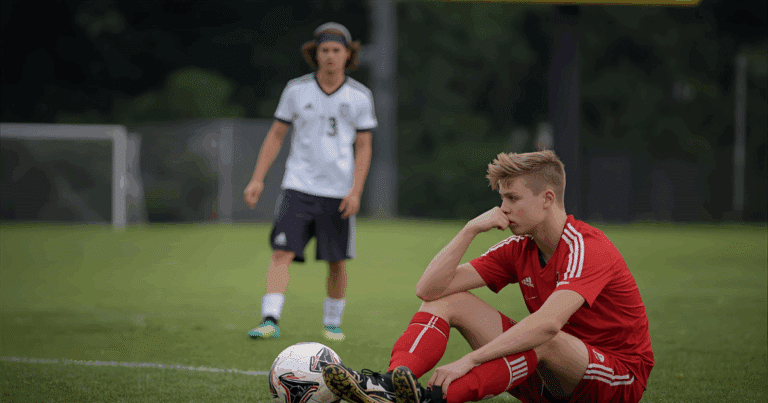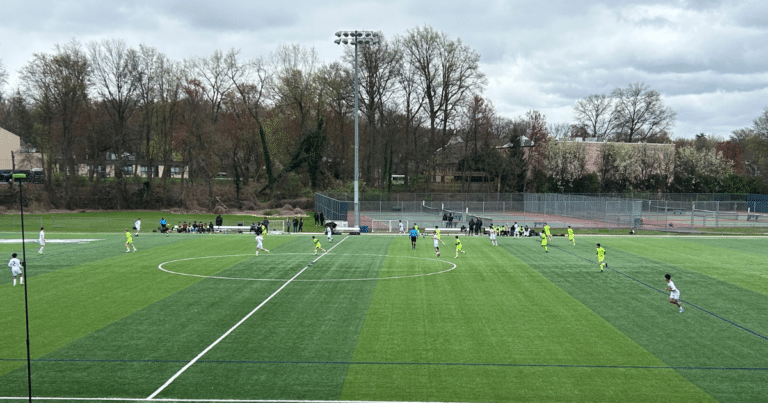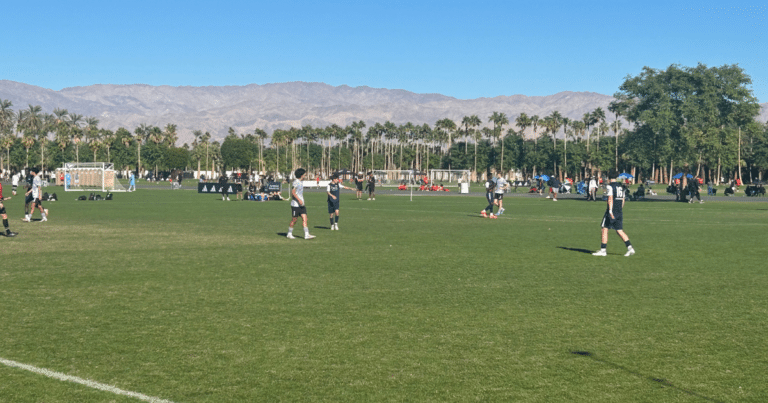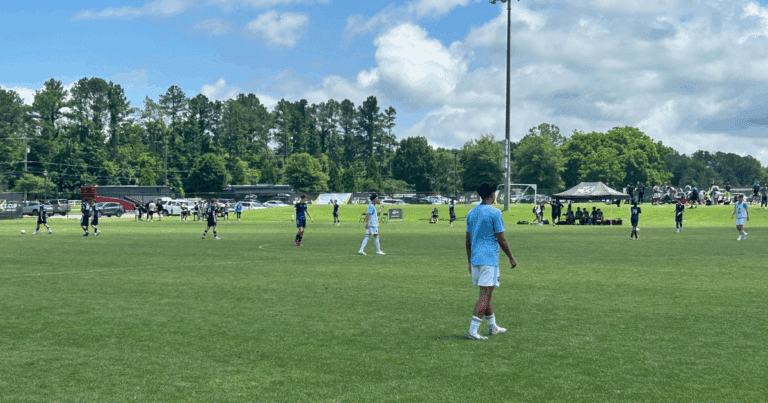Proper Running Form For Soccer Players
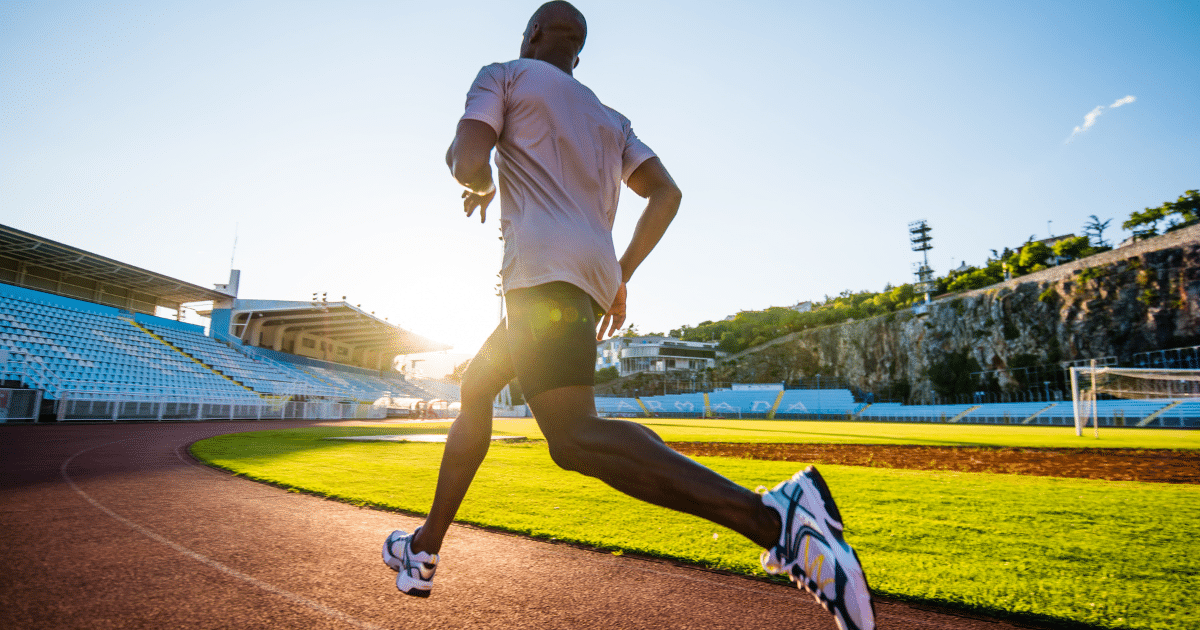
As I’m watching youth soccer players run, I can’t help but notice everyone has their running style. As I drive back to my house, I catch adult recreational runners with their unique style of running.
I’m training for my first marathon and this last hour got me thinking about the proper running form. I want to be able to run my 26.2 miles without hurting myself.
And, I want to teach my son and other soccer players what a proper running form looks like so they can train more, extend their minutes and avoid injuries.
Key Takeaways From This Article:
- Running with proper form helps you avoid nagging injuries as well as gives you more energy so you can run faster and longer.
- Poster, foot strike, and arm swing are all important factors to consider. [jump to section]
- More running will help firm up your form but working out other parts of your body will help you move faster and longer.
This is what the article is all about. I did my due diligence, spoke to running friends, and tested it myself.
The Importance of Proper Running Form
Proper running form is essential for injury prevention and optimal performance.
When you run with good form, you reduce the risk of injuries, such as shin splints, plantar fasciitis, and knee pain. Moreover, correct running form can help you run more efficiently, conserve energy, and run faster and longer.
Here are some of the benefits of the proper running form:
- Reduced risk of injuries: When you run with good form, you reduce the impact on your joints and muscles, and distribute the load more evenly. This helps prevent injuries and overuse syndromes that can occur when you run with poor form.
- Improved energy: Correct running form can help you run more efficiently and use less energy. This means you can run faster and longer without getting tired too quickly.
- Better performance: When you run with proper form, you engage the right muscles and use them more effectively. This can help you run faster and improve your overall performance on the soccer field.
- More enjoyable running experience: Running with good form can help you enjoy your runs more, as you’ll feel more comfortable and efficient. You’ll also be able to focus on your surroundings and enjoy the scenery, rather than being distracted by pain or discomfort.
Here’s what proper a proper running form looks like…
Understanding the Basics of Proper Running Form
In this section, we’ll cover the basics of proper running form, including posture, foot strike, and arm swing.
Posture
Maintaining proper posture is crucial for efficient and injury-free running. Here are some tips to improve your posture while running:
- Keep your head up and your eyes looking straight ahead.
- Keep your shoulders relaxed and down, avoiding tension in your neck and upper back.
- Engage your core muscles to maintain a stable and upright torso.
- Keep your arms bent at a 90-degree angle and swing them naturally at your sides.
Foot Strike
Foot strike refers to the part of your foot that makes initial contact with the ground while running. Here are some tips to improve your foot strike:
- Aim to land midfoot, with your foot striking the ground beneath your hips.
- Avoid overstriding (or lunging too forward), which can lead to heel striking and increased impact forces.
- Keep your feet relaxed and avoid clenching your toes.
Arm Swing
Your arm swing can impact your overall running form and efficiency. Here are some tips to improve your arm swing:
- Keep your elbows bent at a 90-degree angle.
- Swing your arms naturally at your sides, avoiding crossing them in front of your body.
- Avoid tensing your shoulders and upper body, which can lead to wasted energy.
Here is a great video on how to improve your running form.
Common Mistakes in Running Form
When it comes to proper running form, there are a few common mistakes that many runners make.
Overstriding
Overstriding is when you take too long of a stride and land with your foot too far in front of your body. This can cause a braking effect and lead to increased impact forces on your joints.
To avoid overstriding, focus on taking shorter strides and landing with your foot directly underneath your body. If you’re anything like me, this will take some time to practice but it’s worth being aware of it.
Heel Striking
Heel striking is when you land on your heel instead of the midfoot or forefoot. This can also lead to increased impact forces and can cause injuries such as shin splints and plantar fasciitis.
To avoid heel striking, focus on landing on the midfoot or forefoot and allowing your heel to gently touch the ground. Also, don’t lean too far back when you run.
Incorrect Posture
Incorrect posture can lead to decreased efficiency and increased risk of injury. Make sure to keep your shoulders relaxed and your head up, with your eyes looking forward.
Avoid slouching or leaning too far forward or backward.
You should almost be falling forward when you run at any speed.
Tips to Improve Running Form

Strength Training
Strength training helps you build the necessary muscle strength to maintain proper running form.
Some of the best exercises for runners include:
- Squats
- Lunges
- Deadlifts
- Calf raises
These exercises help strengthen your legs, hips, and core, which are all essential for maintaining proper running form.
Flexibility Exercises
Flexibility exercises help you maintain a proper range of motion, which is essential for proper running form.
Some of the best flexibility exercises for runners include:
- Hamstring stretches
- Quad stretches
- Hip flexor stretches
- Calf stretches
In all honesty, joining a yoga studio can help with your flexibility and mobility a lot!
Regular Practice
The more you practice, the more your body will become accustomed to proper running form. Being aware of the right technique can help you make adjustments.
As a soccer player, make sure you are running regularly and focusing on maintaining proper form.
It may take some time, but with regular practice, you will be able to maintain proper running form without even thinking about it.
I think you’ll be pleasantly surprised how much it will help you on the field.
Not only will you avoid injuries but you’ll get to lose balls faster, maintain more stamina, and give you the extra push to get ahead of the competition.
Final Thoughts
By now, you should have a good understanding of what proper running form is and how it can benefit your running performance.
Remember, running with proper form can help you avoid injuries, increase your speed, and improve your overall running efficiency.
To summarize, here are some key takeaways:
- Keep your shoulders back and down, your head up, and your chest out.
- Maintain a slight forward lean from your ankles, not your waist.
- Land on your midfoot or forefoot, not your heel.
- Keep your arms relaxed and swinging naturally at your sides.
- Focus on your breathing (through the nose if you can) and maintain a steady rhythm.
Incorporating these techniques into your running routine may take some practice, but the benefits are worth it, especially for soccer players!

Written By: SoccerNovo
SoccerNovo is an independent youth soccer media brand built to help parents, players, and coaches better understand the game and the pathways available in U.S. soccer. Our mission is to make youth soccer simpler, clearer, and more accessible for everyone involved in it.
Let’s connect



